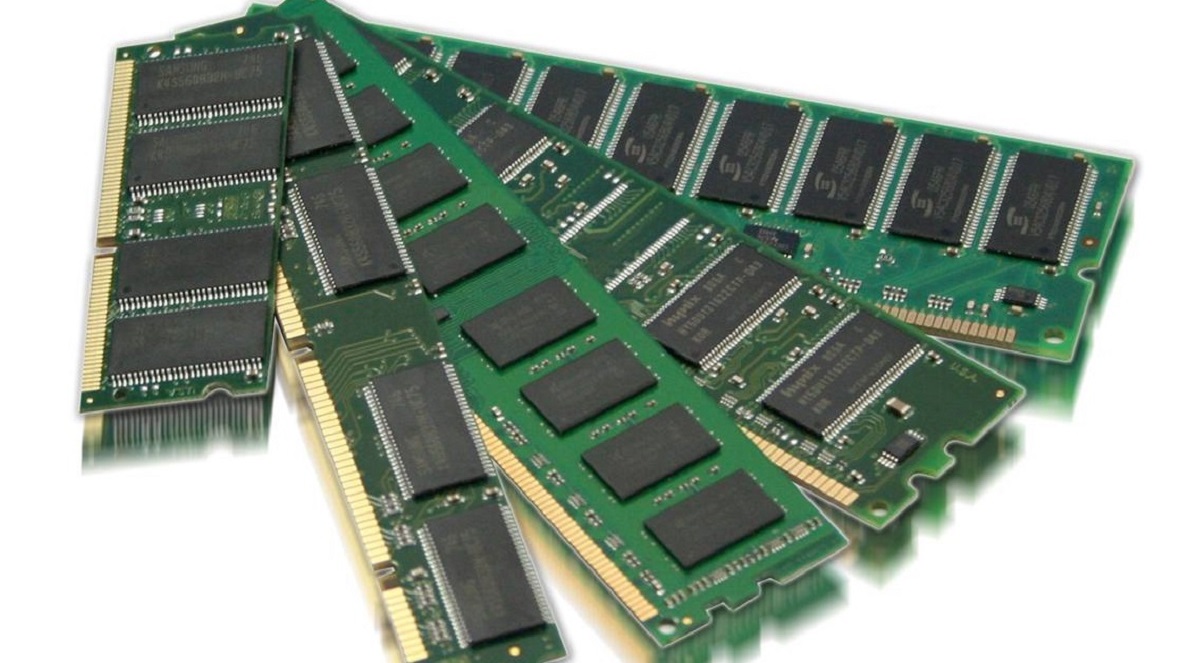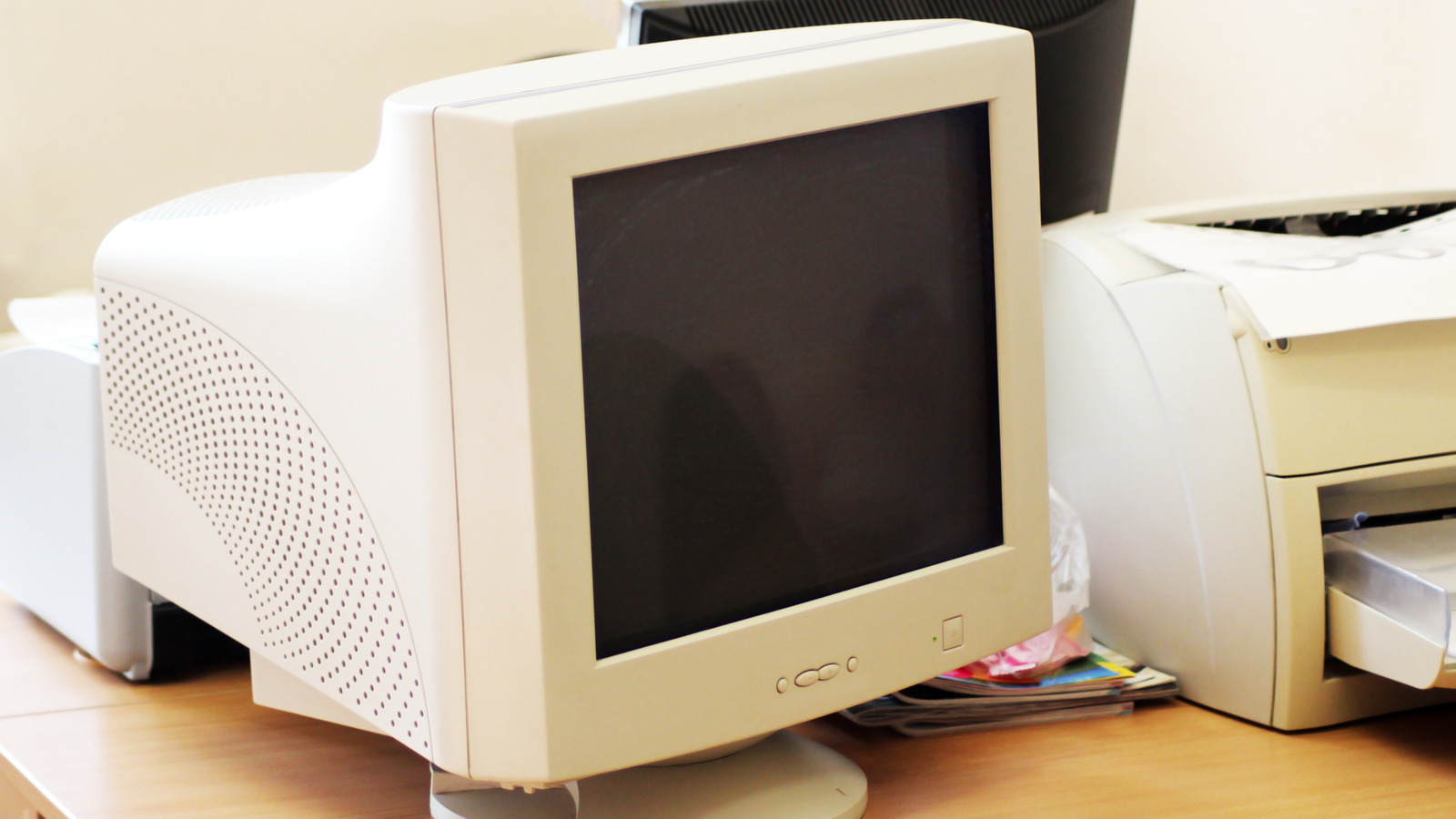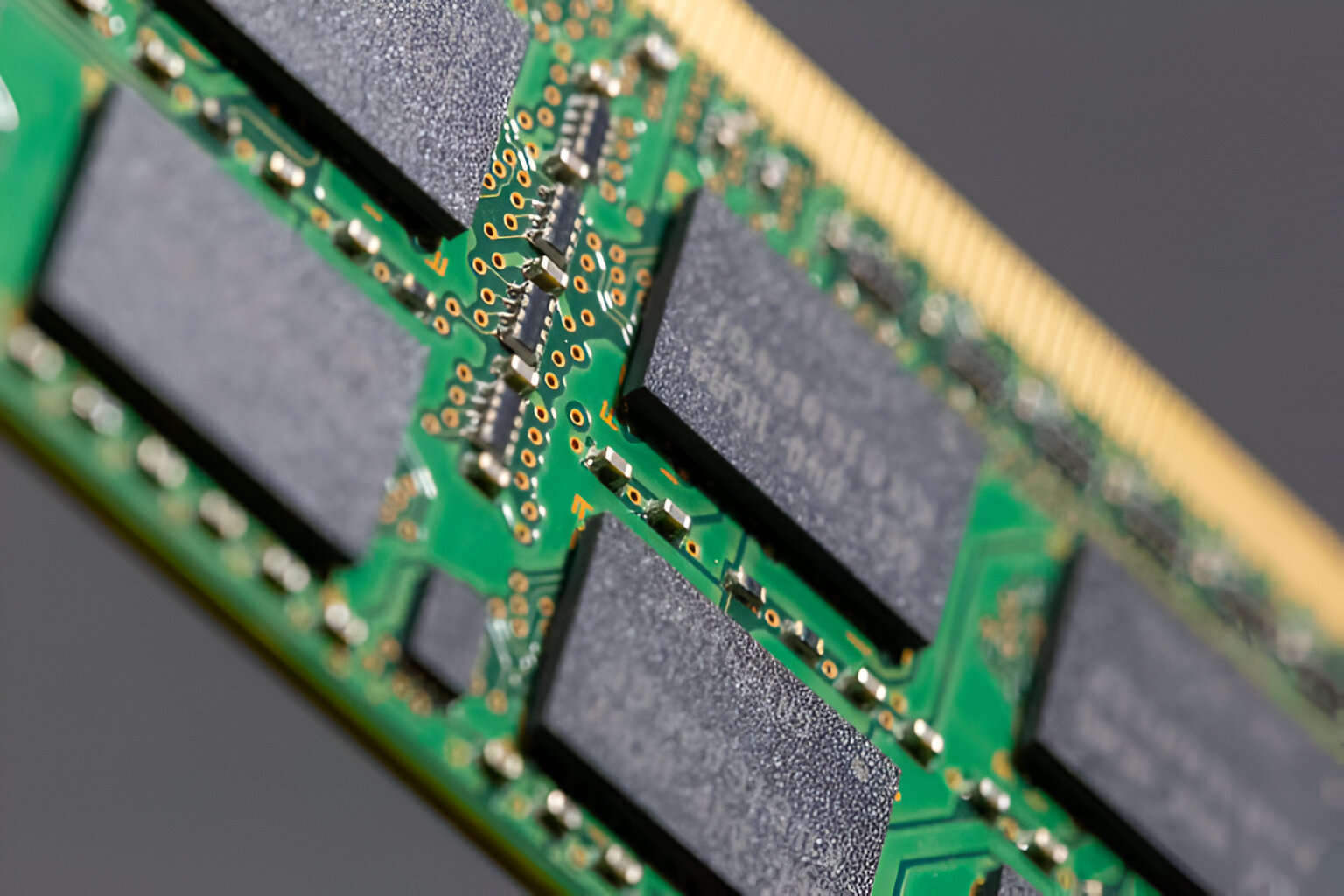Introduction
Welcome to the world of solid-state drives (SSDs), where storage capacity has reached new heights. Gone are the days of being limited by low gigabyte (GB) capacities – SSDs now offer extraordinary amounts of storage space. But what happens when a solid-state drive has a lot of GBs? In this article, we will explore the implications and advantages of high-capacity SSDs.
SSDs have revolutionized the way we store and access data. Unlike traditional hard disk drives (HDDs), which rely on spinning magnetic disks, SSDs utilize flash memory chips. This enables them to deliver exceptional performance, reliability, and speed. With advancements in technology, SSDs can now offer significantly larger storage capacities, accommodating the ever-increasing size of files and applications.
So, what exactly does it mean when a solid-state drive has a lot of GBs? Essentially, it translates to having an abundance of available space to store data. Larger capacity SSDs open up a world of possibilities, allowing users to store extensive media libraries, perform complex tasks, and run resource-intensive applications without worrying about running out of space.
The advantages of having a high-capacity solid-state drive are numerous. Not only does it provide ample room for storing files, but it also offers improved performance, enhanced data transfer rates, and increased longevity. In the following sections, we will delve into the various benefits of large GB solid-state drives and explore the considerations that come with them.
Overview of Solid State Drives (SSDs)
Before we dive into the impact of high-capacity solid-state drives, let’s have a brief overview of what these innovative storage devices are all about. SSDs have gained popularity in recent years due to their numerous advantages over traditional hard disk drives (HDDs).
At their core, SSDs consist of flash memory chips that store data electronically, eliminating the need for mechanical components like spinning disks and moving read/write heads. This results in several key benefits, such as faster access times, lower power consumption, and improved durability.
Unlike HDDs, where data is stored on spinning platters and accessed through read/write heads, SSDs use NAND flash memory technology. This enables SSDs to retrieve and store data at lightning-fast speeds, decreasing boot times and file transfer durations. SSDs also excel in random read and write speeds, making them ideal for tasks that involve accessing multiple files simultaneously.
In terms of durability, SSDs have a significant advantage over HDDs. Without any moving parts, SSDs are less prone to mechanical failures caused by drops, shocks, or vibrations. They are also less susceptible to heat-related issues and are more resistant to magnetic interference. Overall, SSDs offer a longer lifespan and provide a reliable storage solution for personal and professional use.
Another noteworthy advantage of SSDs is their compact and lightweight design. Without the need for bulky mechanical components, SSDs can be much smaller and lighter than HDDs. This makes them ideal for laptops, ultrabooks, and other portable devices where space and weight are crucial considerations.
Furthermore, SSDs operate silently since they lack the spinning disks and moving parts that generate noise in HDDs. This makes them an excellent choice for environments that require quiet operations, such as recording studios, libraries, or offices.
In summary, solid-state drives (SSDs) provide a superior storage solution compared to traditional hard disk drives (HDDs). They offer faster access times, improved durability, lower power consumption, and reduced noise levels. With this foundation, let’s explore the impact of high-capacity SSDs and the advantages they bring to the table.
Understanding GBs in Solid State Drives
When it comes to solid-state drives (SSDs), the phrase “a lot of GBs” refers to the storage capacity of the drive. GB stands for gigabyte, which is a unit of measurement for digital storage. It represents a substantial amount of data that can be stored on the SSD.
Understanding the significance of GBs in SSDs is essential for selecting the right storage capacity for your needs. SSDs come in a variety of sizes, ranging from a few tens of gigabytes to several terabytes. The choice of capacity depends on factors such as the type of data you work with, the number of applications you use, and your storage requirements.
For casual users who primarily use their computers for browsing the web, streaming media, and basic document storage, SSDs with smaller GB capacities, such as 256GB or 512GB, are usually sufficient. These sizes can accommodate the operating system, essential applications, and a reasonable amount of personal files without exceeding the storage limits.
On the other hand, professionals, content creators, and power users who work with large media files, extensive software libraries, or virtual machines may require high-capacity SSDs. These drives, often ranging from 1TB to 4TB or more, provide ample storage space to handle resource-intensive tasks and store a vast amount of data.
It’s important to note that the actual usable capacity of an SSD may be slightly less than the total GB stated on the product. This is due to formatting and file system overhead, which reserve a small portion of the drive’s capacity for essential system files. Therefore, it’s advisable to consider this slight reduction when selecting the appropriate SSD capacity.
Higher GB capacities in SSDs provide several advantages. Firstly, they allow for future-proofing your storage needs. As the size of files and applications continues to grow, having larger storage capacity ensures that you won’t quickly run out of space. Additionally, higher GB SSDs offer more flexibility, enabling you to store multimedia files, games, and other data-intensive content without worrying about limited capacity.
As you consider the required GB capacity for your SSD, it’s essential to strike a balance between your needs and budget. While larger capacity SSDs offer more storage space, they tend to be more expensive than their lower-capacity counterparts. Therefore, it’s crucial to assess your storage requirements and choose a capacity that provides enough room for your data while remaining within your budgetary constraints.
In the next sections, we will explore the benefits and considerations of high-capacity solid-state drives. We will delve into the improved performance, enhanced data transfer rates, and increased lifespan offered by these large GB SSDs.
Increased Storage Capacity
One of the significant advantages of solid-state drives (SSDs) with a lot of gigabytes (GBs) is the increased storage capacity they offer. As technology advances, SSDs have become capable of providing larger storage capacities, allowing users to store an extensive amount of data.
With increased storage capacity, users have the freedom to store large multimedia files, such as high-definition videos, 4K movies, and raw image files, without worrying about running out of space. Additionally, professionals who work with resource-intensive applications, such as video editing software or 3D rendering programs, can benefit greatly from high-capacity SSDs. These drives can accommodate the large file sizes associated with such tasks, ensuring smooth and efficient workflows.
Moreover, increased storage capacity translates to better organization and management of data. Users can create separate folders or partitions to categorize their files, making it easier to locate and access specific data when needed. This is especially useful for individuals who deal with a wide variety of files, such as photographers, graphic designers, and content creators who need to store different types of media files.
Another advantage of having ample storage space is the ability to install and run multiple applications simultaneously. This is particularly beneficial for gamers, software developers, and professionals who rely on a wide range of software tools. With a high-capacity SSD, users can install their preferred applications, games, and development environments without worrying about limited storage space or compromising performance.
Additionally, the increased storage capacity of SSDs allows for efficient data backup and archiving. Users can easily create backups of their important files and store them on the same SSD or use the drive as a primary backup destination. This ensures that valuable data is protected, accessible, and recoverable in the event of system failures, data corruption, or accidental deletions.
However, it’s worth noting that having a large storage capacity also comes with the responsibility of organizing and managing the data effectively. With more space available, it’s essential to implement a structured file organization system to avoid clutter and ensure efficient access to files. Regular maintenance, such as removing unnecessary or duplicate files, is also crucial to optimize the performance and longevity of the SSD.
In summary, the increased storage capacity offered by high-capacity SSDs allows users to store a significant amount of data, including large multimedia files and resource-intensive applications. It provides better organization, the ability to run multiple applications, and efficient data backup and archiving. However, users should practice proper data management to ensure the SSD’s performance remains optimal.
Improved Performance and Speed
Having a solid-state drive (SSD) with a lot of gigabytes (GBs) not only provides increased storage capacity but also delivers improved performance and speed compared to traditional hard disk drives (HDDs).
One of the significant advantages of high-capacity SSDs is their ability to offer faster boot times and improved system responsiveness. The absence of moving mechanical parts in SSDs allows for quicker access to stored data, resulting in reduced startup times for the operating system and applications. Users can enjoy a seamless and efficient computing experience, with applications launching almost instantly and files opening without any noticeable delays.
The improved performance of high-capacity SSDs is especially evident when it comes to data transfer rates. These drives excel in both sequential and random data transfers, enabling faster file copy, write, and read speeds. This is particularly beneficial for tasks that involve handling large files, such as video editing or data analysis. With high-capacity SSDs, professionals can enjoy smoother workflows, speeding up project completion and increasing productivity.
In addition to faster data transfer rates, high-capacity SSDs also offer improved multitasking capabilities. With their ability to handle multiple read and write requests simultaneously, these drives can provide smooth and efficient performance even in situations where multiple applications are running simultaneously. This is particularly beneficial for users who frequently multitask or switch between resource-intensive applications.
Moreover, the improved performance and speed of high-capacity SSDs greatly enhance the overall gaming experience for gamers. These drives can significantly reduce game loading times, allowing players to jump into their favorite games faster. Additionally, the faster data access and transfer speeds of SSDs provide smoother gaming performance, reducing lag and increasing responsiveness, giving gamers a competitive edge.
It’s important to note that the performance benefits of high-capacity SSDs are not only limited to speed but also contribute to energy efficiency. SSDs consume less power compared to HDDs since they do not require spinning disks and moving parts to function. As a result, high-capacity SSDs can contribute to longer battery life for laptops and lower energy costs for desktop systems.
In summary, high-capacity SSDs with a lot of GBs provide improved performance and speed compared to traditional HDDs. With faster boot times, quicker data transfer rates, enhanced multitasking capabilities, and smoother gaming performance, users can enjoy a seamless and efficient computing experience. Additionally, the energy-efficient nature of SSDs contributes to improved battery life and reduced power consumption.
Enhanced Data Transfer Rates
One of the significant advantages of solid-state drives (SSDs) with a lot of gigabytes (GBs) is their enhanced data transfer rates. The speed at which data can be written and read from the drive is crucial for tasks that involve transferring large files, accessing applications, and improving overall system performance.
High-capacity SSDs offer faster data transfer rates, resulting in quicker file copy, write, and read speeds. The absence of moving mechanical parts in SSDs allows for near-instantaneous access to data, significantly reducing the time required to transfer files between the drive and the computer’s memory.
Sequential data transfer rates, which measure how quickly large files can be read or written in a continuous sequence, are particularly impressive in high-capacity SSDs. These drives can sustain high speeds during large file transfers, making them ideal for tasks that involve working with video editing, rendering, and other data-intensive applications.
Furthermore, high-capacity SSDs excel in random data transfer rates, which measure the speed at which small, non-contiguous files can be accessed. This is particularly beneficial for tasks that involve multitasking, accessing numerous small files simultaneously, or running applications that require frequent disk access. With high-capacity SSDs, users can enjoy snappy and responsive performance, even when performing intensive multitasking activities.
Another advantage of enhanced data transfer rates is the accelerated loading times in gaming. High-capacity SSDs allow games to load significantly faster, minimizing the waiting time and ensuring a smooth gaming experience. Gamers can jump into their favorite games swiftly, reducing the downtime and enhancing their overall gaming enjoyment.
It’s worth noting that the data transfer rates of high-capacity SSDs can be maximized when paired with a compatible interface, such as SATA III or NVMe (Non-Volatile Memory Express). These interfaces provide greater bandwidth and optimize the performance of the drive, allowing users to fully experience the enhanced data transfer rates offered by high-capacity SSDs.
Additionally, SSDs with enhanced data transfer rates contribute to overall system performance and responsiveness. With faster data access and transfer speeds, applications launch quicker, files open with minimal delay, and the overall computing experience becomes more efficient and seamless.
In summary, high-capacity SSDs with a lot of GBs offer enhanced data transfer rates, providing faster file copy, write, and read speeds. With their impressive sequential and random data transfer capabilities, these drives excel in tasks that involve transferring large files, multitasking, loading games swiftly, and improving overall system performance. Paired with a compatible interface, high-capacity SSDs deliver optimized performance and a seamless computing experience.
Lengthy Lifespan and Durability
High-capacity solid-state drives (SSDs) with a lot of gigabytes (GBs) offer not only increased storage capacity and improved performance but also bring significant benefits in terms of longevity and durability. Unlike traditional hard disk drives (HDDs) with mechanical components that are prone to wear and tear, SSDs boast a longer lifespan and superior durability.
One of the main factors contributing to the lengthy lifespan of high-capacity SSDs is the absence of moving parts. Unlike HDDs that rely on spinning platters and moving read/write heads, SSDs utilize flash memory technology to store and retrieve data. As a result, there are no physical components that can break down over time, leading to a longer operational life.
Furthermore, SSDs are not affected by issues such as disk fragmentation or mechanical failures due to drops or shocks. This makes them more reliable and less susceptible to data loss, ensuring that your data remains protected and accessible for an extended period.
The durability of high-capacity SSDs is another outstanding feature. Without any moving parts, these drives are more resistant to physical damage caused by accidents or rough handling. SSDs can withstand vibrations, bumps, and drops, making them an ideal choice for users who require portability or who work in environments where the equipment may be subjected to physical stress.
In addition, high-capacity SSDs are less susceptible to temperature-related issues. Unlike HDDs, which can experience overheating due to continuous spinning, SSDs generate less heat, resulting in lower operating temperatures. This not only improves the overall lifespan of the drive but also provides a more stable and reliable environment for storing and accessing your data.
Another aspect that contributes to the longevity of high-capacity SSDs is wear leveling technology. This technology ensures that data is evenly distributed across the SSD, preventing specific cells from getting worn out more quickly than others. Consequently, wear leveling helps to extend the lifespan of the drive by optimizing data usage and minimizing the risk of data corruption or loss due to constant read and write operations.
It’s important to note that the lifespan of an SSD can also be influenced by factors such as the type of NAND flash memory used and the workload placed on the drive. Different types of NAND flash memory have varying endurance levels, with newer technologies offering improved longevity. Additionally, heavy or intensive usage can impact the lifespan of the drive, so it’s crucial to consider the expected workload and choose an SSD accordingly.
In summary, high-capacity SSDs with a lot of GBs offer a lengthy lifespan and superior durability compared to traditional HDDs. With no moving parts, these drives are less prone to physical damage and mechanical failures. The absence of spinning disks also contributes to lower operating temperatures and improved reliability. Combined with wear leveling technology, high-capacity SSDs ensure that your data remains secure and accessible for a prolonged period.
Considerations for Large GB Solid State Drives
While high-capacity solid-state drives (SSDs) with a lot of gigabytes (GBs) offer numerous benefits, there are certain considerations to keep in mind when using large GB SSDs. These considerations include factors such as power consumption, data organization, and drive compatibility.
One consideration to be aware of is the impact of power consumption. Larger GB SSDs typically consume more power compared to their lower-capacity counterparts. While the power difference may not be significant, it’s important to take it into account, particularly for portable devices such as laptops or tablets where battery life is a critical factor. It’s advisable to understand the power specifications of the SSD and ensure that it aligns with the power capabilities of your device.
Organizing and managing your data is another important consideration when using large GB SSDs. With ample storage space, it can be easy to accumulate a vast amount of files and potential clutter. It’s essential to implement an effective file organization system to maintain easy access and prevent data fragmentation. Creating folders, subfolders, and using descriptive naming conventions can help keep your data organized and streamline your workflow. Regularly decluttering and removing unnecessary files and duplicates is also recommended to optimize the performance and maximize the available space on your SSD.
Compatibility is another consideration when using large GB SSDs. Before purchasing an SSD, it’s important to ensure that it is compatible with your system’s interface and firmware. SSDs typically come in different form factors such as 2.5-inch, M.2, or PCIe, and use various interfaces like SATA or NVMe. Understanding your system’s compatibility requirements and checking the specifications of the SSD will help avoid any compatibility issues or performance limitations.
It’s also essential to consider the expected workload and usage patterns when selecting a high-capacity SSD. Different SSDs have varying endurance levels, which indicate how many data write cycles they can endure before performance degradation occurs. If you anticipate heavy or intensive usage, such as extensive video editing or running resource-demanding applications, it’s advisable to choose an SSD with a higher endurance rating to ensure long-term reliability and performance.
Lastly, it’s important to consider backup and data protection strategies for large GB SSDs. While SSDs are generally reliable, data loss can still occur due to various reasons such as accidental deletion, hardware failure, or software corruption. Implementing regular backups to external storage devices or cloud services is a crucial practice to ensure the safety and recoverability of your valuable data.
To summarize, there are several considerations to keep in mind when using large GB SSDs. These considerations include power consumption, data organization, drive compatibility, workload expectations, and data protection strategies. By being mindful of these factors, you can optimize your experience with high-capacity SSDs and enjoy their numerous benefits for long-term and efficient data storage.
Impact on Power Consumption
When using solid-state drives (SSDs) with a large number of gigabytes (GBs), it’s important to consider the impact on power consumption. While SSDs are generally more power-efficient than traditional hard disk drives (HDDs), larger GB SSDs tend to consume slightly more power compared to their lower-capacity counterparts.
The power consumption of an SSD can vary depending on various factors, including the specific model, capacity, and usage patterns. High-capacity SSDs typically have more memory chips and controllers, which can contribute to slightly higher power consumption. However, it’s important to note that the power difference between different capacity SSDs may not be significant in practical usage scenarios.
For portable devices such as laptops or tablets that rely on battery power, power efficiency is a critical factor to consider. High-capacity SSDs typically consume more power during peak performance or heavy usage scenarios. As a result, it’s important to assess the power capabilities of your device and ensure that they align with the power requirements of the SSD.
Despite the slightly higher power consumption of large GB SSDs, they still offer significant advantages over HDDs in terms of power efficiency. SSDs have no moving mechanical parts like HDDs, which consume significant power for spinning disks and moving read/write heads. This absence of mechanical components in SSDs contributes to lower power consumption overall.
Moreover, SSDs have faster access times and data transfer rates, resulting in shorter read and write durations. This means that the SSD can complete its operations more quickly, allowing it to return to an idle state sooner and consume less power in the process.
It’s worth mentioning that while power efficiency is important for portable devices, the impact on power consumption may be relatively small for desktop systems that are connected to a continuous power source. In these cases, the difference in power consumption between SSD capacities might not have a significant practical impact on energy usage or electricity bills.
When it comes to power efficiency, SSDs also offer an advantage during idle or low activity periods. SSDs require significantly less power during idle times compared to HDDs, which continually spin their disks even when no data is being accessed. This can contribute to power savings and extended battery life for portable systems.
In summary, high-capacity SSDs with a large number of GBs may consume slightly more power compared to lower-capacity SSDs. However, SSDs as a whole are more power-efficient than traditional HDDs. The absence of moving mechanical parts and faster data access contribute to lower overall power consumption. While power efficiency is essential for portable devices, the impact on power consumption may be relatively small for desktop systems. Evaluating the power capabilities of your device and aligning them with the power requirements of the SSD can help ensure optimal performance and power efficiency.
Data Organization and Management
When utilizing solid-state drives (SSDs) with a large amount of gigabytes (GBs), effective data organization and management become crucial. With ample storage space provided by high-capacity SSDs, it’s important to implement strategies to keep your data organized, easily accessible, and efficiently managed.
One key consideration in data organization is the use of folders and subfolders. Creating a logical folder structure helps categorize and segregate different types of files, making it easier to locate specific data when needed. Organizing files into relevant folders can streamline workflows and save time by reducing the time spent searching for files.
Another aspect to consider is the use of descriptive naming conventions. Giving files clear and meaningful names allows for quick identification and better understanding of their content. Consider using naming schemes that include relevant keywords or dates to make it easier to locate files in the future.
Furthermore, it’s important to regularly declutter and remove unnecessary files from the SSD. As data accumulates over time, it can lead to clutter and decrease the efficiency of storage space utilization. Regularly reviewing files, deleting duplicates, and removing outdated or unused data can help optimize storage capacity and improve overall system performance.
In addition to organizing and decluttering files, it’s beneficial to implement backups and data protection measures. Backing up your important files to external storage devices or cloud services provides an extra layer of security against data loss or hardware failure. Implementing a regular backup routine ensures that your valuable data remains safe and recoverable in the event of unexpected issues.
When managing large GB SSDs, it’s also important to be aware of file fragmentation. Fragmentation occurs when files become broken up and scattered across different locations on the SSD, which can result in slower performance. Periodically defragmenting the SSD can help optimize file organization and improve read/write speeds. However, it’s worth noting that SSDs handle fragmentation differently than HDDs, and excessive defragmentation can potentially wear out the SSD. Therefore, it’s recommended to research and understand the SSD’s specific defragmentation capabilities before performing any defragmentation actions.
Lastly, keeping your SSD firmware up to date is essential for optimal performance and compatibility. SSD manufacturers often release firmware updates that address stability issues, enhance performance, and introduce new features. Staying up to date with firmware updates ensures that your SSD operates at its best and takes advantage of the latest advancements in technology.
In summary, effective data organization and management are crucial when utilizing high-capacity SSDs. Implementing a logical folder structure, using descriptive naming conventions, decluttering files, and implementing backup routines contribute to organized and efficiently managed data. Additionally, being aware of file fragmentation, updating firmware, and practicing regular maintenance help optimize performance and ensure a seamless experience with your large GB SSD.
SSD Maintenance and Optimization Tips
To ensure optimal performance and longevity of solid-state drives (SSDs) with a large number of gigabytes (GBs), it is important to implement regular maintenance and optimization practices. These tips will help maximize the efficiency and lifespan of your SSD:
1. Regularly update firmware: Check for firmware updates provided by the SSD manufacturer and keep your SSD’s firmware up to date. Firmware updates often include bug fixes, performance enhancements, and compatibility improvements.
2. Avoid excessive write operations: While modern SSDs have improved endurance, minimizing unnecessary write operations can help prolong the lifespan of the drive. Avoid frequent and unnecessary data writes to the SSD, such as temporary files or excessive browser caches.
3. Enable TRIM: Ensure that TRIM is enabled on your SSD. TRIM is a feature that helps maintain SSD performance by allowing the operating system to inform the SSD which data blocks are no longer in use. This helps optimize the efficiency of the drive and prevent issues related to performance degradation over time.
4. Don’t defragment the SSD: Unlike traditional hard disk drives, SSDs do not require defragmentation. In fact, defragmenting an SSD can cause unnecessary wear on the drive and may not provide any performance benefits. SSDs handle data differently, so manual defragmentation is not necessary.
5. Use secure erase: When necessary, consider performing a secure erase on your SSD. This process ensures that all data is securely erased from the drive, restoring it to a fresh state. However, exercise caution and backup important data before proceeding with this process as it will delete all data on the SSD.
6. Maintain adequate free space: Leaving some free space on the SSD helps maintain optimal performance. Overfilling the drive can lead to decreased performance and may impact the lifespan of the SSD. Aim to keep at least 10-20% of the SSD’s total capacity free to ensure efficient operation.
7. Regularly back up your data: Implement a regular backup strategy to ensure that your valuable data is protected in case of accidental deletion, hardware failure, or other unforeseen incidents. Back up your important files to external storage devices or cloud services for an extra layer of security.
8. Scan for and remove malware: Periodically scan your SSD for malware using reputable antivirus software. Malware can degrade SSD performance and compromise the security of your data. Regular scans help identify and eliminate any potential threats.
9. Avoid extreme temperatures: Extreme temperatures can impact the performance and lifespan of your SSD. Avoid exposing the drive to excessive heat or cold. Optimal operating temperatures typically range from 0°C to 70°C (32°F to 158°F), but consult your SSD’s specifications for specific temperature guidelines.
10. Regularly perform disk cleanup: Conduct routine disk cleanup to remove unnecessary files, temporary files, and system caches. This helps optimize the available space on your SSD and improves overall system performance.
By following these maintenance and optimization tips, you can ensure that your high-capacity SSD with a large number of GBs operates at its best, providing you with fast and reliable storage for your data and applications.
Conclusion
High-capacity solid-state drives (SSDs) with a large number of gigabytes (GBs) offer a myriad of advantages, ranging from increased storage capacity to improved performance and speed. These drives allow users to store extensive amounts of data, run resource-intensive applications, and enjoy quicker file access and data transfer rates.
With larger GB capacities, users can take advantage of enhanced organization and management of their data, creating efficient file structures and ensuring easier access to specific files when needed. Considerations such as power consumption, data organization, and drive compatibility should be taken into account when using large GB SSDs, as these factors can impact the overall performance and efficiency of the drives.
Furthermore, high-capacity SSDs exhibit an impressive level of durability and longevity due to their lack of moving parts. With increased resistance to mechanical failures and an ability to withstand physical shocks, SSDs provide reliable storage options for both personal and professional users.
Maintenance and optimization practices play a crucial role in maximizing the lifespan and performance of high-capacity SSDs. Regular firmware updates, enabling TRIM, maintaining free space, and implementing effective backup strategies are just a few examples of the steps that can be taken to optimize SSD performance and protect valuable data.
In conclusion, high-capacity SSDs with a large number of GBs offer a remarkable storage solution and numerous benefits for users who require ample storage space, improved performance, and increased durability. By considering the specific needs of your data storage requirements, implementing proper organization and management strategies, and following maintenance tips, you can maximize the efficiency, longevity, and overall experience of using large GB SSDs.

























